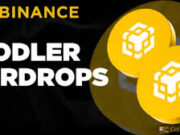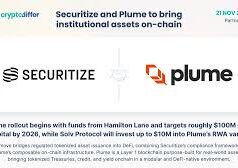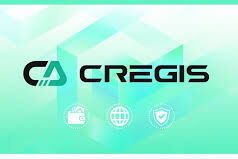Imagine this for a moment: You’re a freelancer in Manila wrapping up a project for a client in New York. You hit “send” on your invoice. Instead of seeing the payment arrive instantly, you’re left staring at a three-day wait, expensive fees quietly eating into your hard-earned money, and a currency conversion rate that feels more like guesswork than science. Frustrating, right?
This is the daily reality for millions worldwide—cross-border payments that feel outdated in a hyper-connected digital economy. But what if the rules were changing? What if payments could move across borders with the same ease as sending an email?
That’s exactly what Visa is now testing. At the SIBOS 2025 conference in Beijing, Visa unveiled a pilot program that could reshape global finance. By using stablecoins such as Circle’s USDC and EURC, Visa aims to make international transfers nearly instant and dramatically cheaper (Cointelegraph, 2025).
This pilot, built on Visa Direct, treats stablecoins as “cash equivalents” for pre-funding cross-border payouts. Instead of requiring banks and businesses to lock away massive sums in pre-funded accounts around the world, Visa is offering a model where stablecoins act as digital cash on demand.
As Chris Newkirk, Visa’s global head of new payment flows, put it: this approach eliminates “capital lockup” and accelerates liquidity (Bloomberg, 2025).
So, why does this matter now? Let’s break it down.
Stablecoins 101: Why They’re Built for Payments, Not Speculation
For those new to crypto, stablecoins can sound like a niche gimmick. They’re not. Stablecoins are digital tokens pegged 1:1 to real-world fiat currencies such as the US dollar or euro, backed by reserves of cash or equivalents. Think of USDC as a digital twin of the US dollar that lives on public blockchains like Ethereum or Solana.
Unlike volatile cryptocurrencies such as Bitcoin, stablecoins are designed for stability, transparency, and payments efficiency (Visa Corporate, 2025).
Traditional cross-border wires via SWIFT can take days to settle and cost 3–5% in fees. Stablecoins flip this model by offering:
- Near-instant settlement (minutes, not days)
- Low transaction fees (often pennies per transfer)
- Auditability on a public blockchain
Visa is not reinventing the wheel. Instead, it is integrating blockchain rails into its existing network. By letting partners preload stablecoins into Visa Direct accounts, Visa is essentially making them fungible with cash. The payout to recipients? Immediate.
And this isn’t Visa’s first experiment. In 2021, Visa trialed USDC settlements on Ethereum. By 2023, the company was piloting deeper liquidity pools. Now, with stablecoins like USDC and EURC minted by Circle and issued through Paxos, Visa is scaling up its ambitions (Payments Dive, 2025).
The Cross-Border Payment Problem: Why the Current System Still Hurts
Global commerce has exploded. E-commerce alone reached $6.5 trillion in 2024, yet the infrastructure for moving money across borders hasn’t kept up.
The SWIFT network, which underpins trillions in international transactions, still runs on decades-old batch processing. That means settlements can take days, leaving businesses waiting, suppliers unpaid, and workers frustrated (FXC Intelligence, 2025).
Consider this: remittance workers in the Philippines send home $38 billion each year, but lose 6–7% of it in fees. Worse still, weekends and holidays stall transfers entirely.
Stablecoins solve this by being:
- Always on (24/7 availability)
- Borderless (usable across jurisdictions)
- Low-cost (far cheaper than legacy rails)
Visa’s pilot aims to reduce reliance on Nostro/Vostro accounts—banking arrangements where capital sits idle overseas “just in case.” By freeing up this liquidity, Visa is helping businesses reduce costs and improve cash flow.
Even small transfers illustrate the problem. A mid-sized apparel sourcing manager recently described paying $45 in fees on a $5,000 transfer that still took four days. Under Visa’s pilot, that could shrink to same-day settlement for just a few dollars (PaymentsCMI, 2025).
Visa’s Strategy: Partners, Pilots, and Blockchain Integration
Visa’s pilot is not a solo act. It involves collaborations with Circle (USDC, EURC) and Paxos (issuance infrastructure).
The rollout is targeted at select banks and fintechs experimenting with real-world use cases like:
- Gig economy payouts in Latin America
- Supplier settlements in Southeast Asia
- E-commerce disbursements in emerging markets
This is powered by Visa Direct, which already moves over $500 billion per quarter. By adding stablecoins to the backend, Visa is blending blockchain’s speed with Visa’s trusted fiat rails (The Block, 2025).
Competitors are not sitting still. SWIFT recently partnered with Consensys for blockchain settlement trials. Mastercard is exploring stablecoin payment networks, while Stripe’s $1.1 billion acquisition of Bridge underscores how seriously fintechs are approaching the problem (Investing.com, 2025).
But Visa has one clear advantage: scale. With a network of over 100 million merchants worldwide, it can integrate stablecoins at massive volume almost instantly.
Winners, Losers, and the Ripple Effects
If successful, Visa’s stablecoin push could reshape industries:
- Remittance providers may see fees fall, forcing them to diversify into new services.
- Small businesses in volatile economies like Argentina gain stability by holding USDC, shielding against inflation.
- Banks can unlock new revenue from custody, conversions, and liquidity management.
Still, risks remain. Regulators are watching closely. The EU’s MiCA framework imposes strict audit and reserve rules for stablecoin issuers. In the US, the SEC continues to debate whether certain stablecoins qualify as securities.
And while Visa is partnering with audited issuers like Circle, the collapse of TerraUSD in 2022 is a reminder that trust in stablecoins can vanish overnight (Edgar Dunn, 2025).
At the same time, stablecoin pilots may push governments to accelerate central bank digital currency (CBDC) development. Already, 134 countries are exploring CBDCs. Stablecoins may well serve as the blueprint (McKinsey, 2025).
The Future: Normalizing Stablecoins in Everyday Payments
Fast-forward one year. If Visa’s pilot proves successful, stablecoin pre-funding could become standard practice. Transaction volumes might surge, particularly in Asia-Pacific, where remittance flows could see over $100 billion in annual savings.
Looking ahead to 2030, McKinsey predicts stablecoins could power 10% of global payments, embedding themselves into the financial system much like the internet protocols that underpin today’s digital economy.
This evolution won’t be about hype. It will be about infrastructure. Stablecoins will fade into the background—plumbing that just works.
Conclusion: Visa’s Stablecoin Pilot as a Payments Pivot Point
Visa’s stablecoin experiment isn’t just a technical test. It’s a strategic move that could redefine how money moves worldwide.
By marrying blockchain’s speed with Visa’s existing global rails, the company is signaling that the future of payments must be faster, fairer, and borderless.
Yes, challenges exist—regulatory scrutiny, peg risks, interoperability battles—but the trajectory is clear.
For freelancers, small businesses, and families sending money home, this isn’t just innovation. It’s liberation. And for Visa, it’s a bold step into the future of finance.
Sources:
- Visa Direct tests stablecoins as cash equivalent for instant transfers – Cointelegraph (Sep 30, 2025)
- Visa Pilots Stablecoin Settlements – Kanalcoin (Sep 30, 2025)
- Visa Tests Pre-Funded Stablecoins – Bloomberg (Sep 30, 2025)
- Visa Corporate Blog: Empowering the Future of Payments with Stablecoins (2025)
- FXC Intelligence: Stablecoins in Cross-Border Payments (Sep 25, 2025)
- PaymentsCMI: Stablecoins & Cross-Border Payments (Jun 17, 2025)
- Payments Dive: Visa Pursues Stablecoins (May 6, 2025)
- The Block: Visa Pilots Stablecoin Payments (Sep 29, 2025)
- Payments Consulting Network: Reshaping Cross-Border Payments with Stablecoins (Jul 22, 2025)
- Edgar Dunn: Are Stablecoins the Future of Cross-Border Payments? (2025)
- McKinsey: Stablecoins Payments Infrastructure for Modern Finance (Jul 20, 2025)
- Investing.com: Visa Bets on Stablecoins to Speed Up Payments (Sep 30, 2025)



























